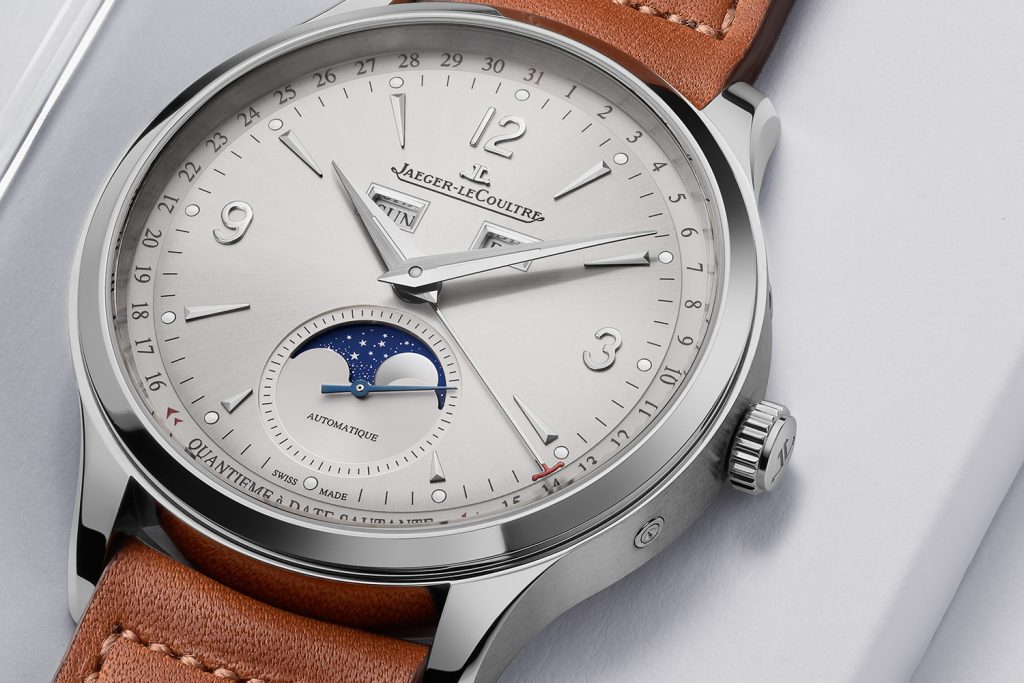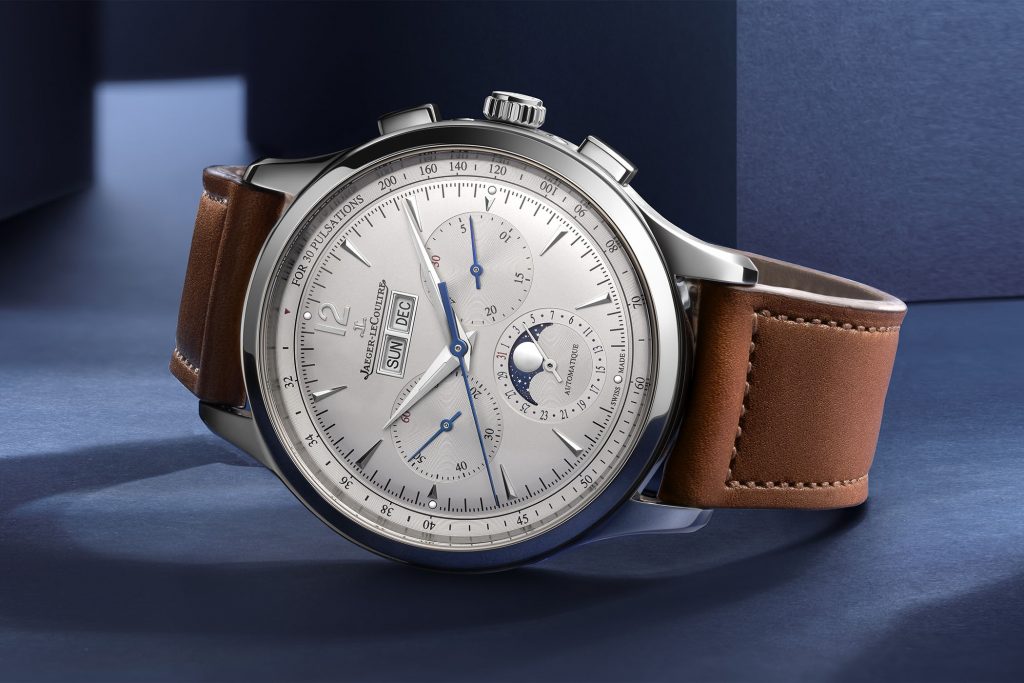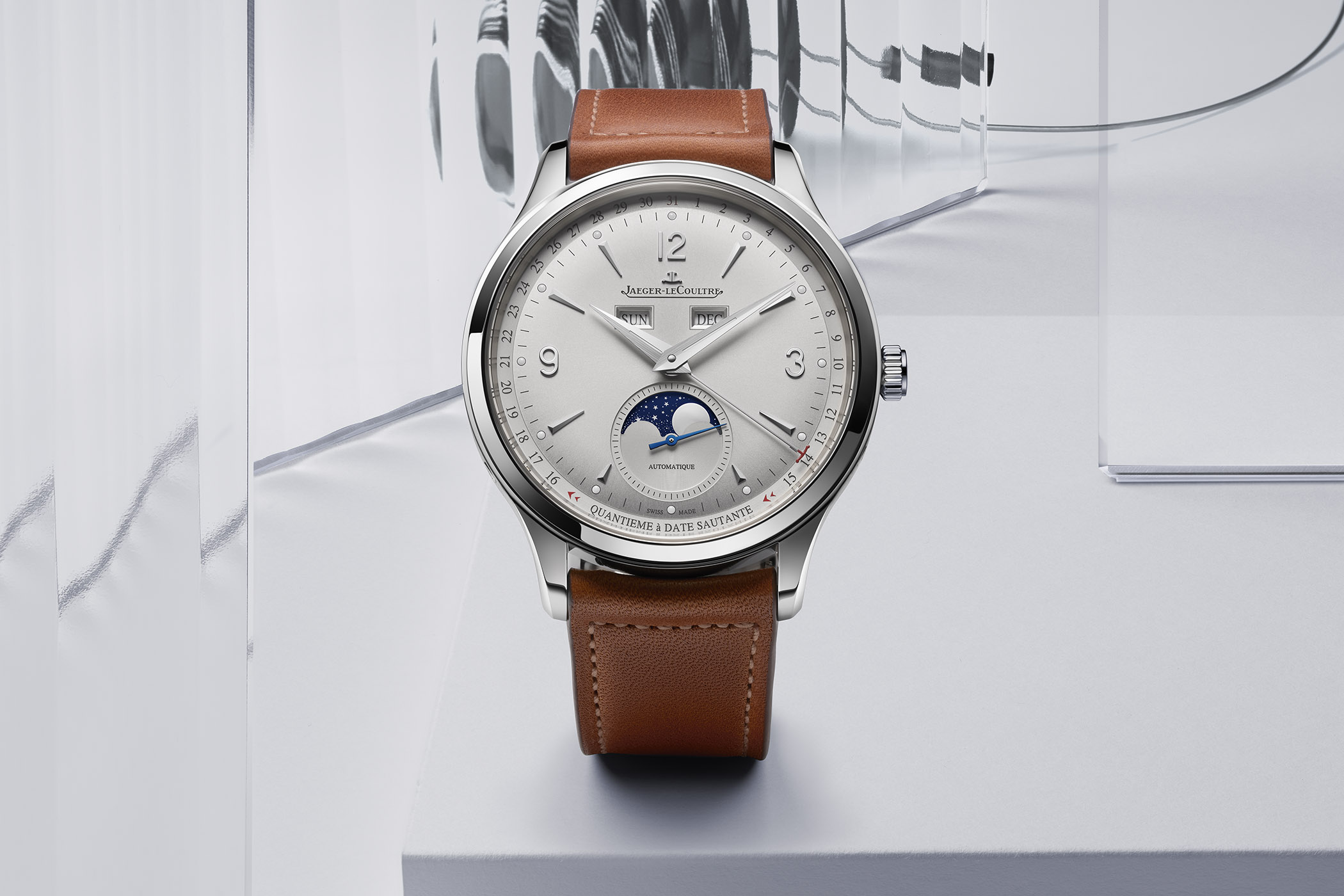First introduced in 1992, the Master Control line up has been a constant in the Jaeger LeCoultre catalog offering the classic conservative designs and technical know how. The name of the line up was from the 1000 hour control testing that started in 1992, where the testing is not just the movement outside of the case as in the COSC testing but with the actual watch assembled!
The new Master Control collection for 2020 introduces 4 models, differentiated by their complications. The designs are not bold as one would find with a rainbow bezel or indexes but rather restrained, but in a good way as these are on the dressier side and would feel out of place.

All four watches have a case diameter of 40mm and have polished bezels and top of the lugs, while the side case is brushed. Although the watches are all 40mm, the bezels are thinner than previous models, allowing the watch to wear larger than its stated specs due to the visual presentation.
All of the models have a sunray finished dial that is silvery white, with brushed dauphine hands and polished triangular applied indexes. With the exception of the Master Control Date, the other 3 models are also available in Le Grand Rose gold, which JLC states will be more corrosion resistant and color fading.

Master Control Date:
The entry level model of the line up is the Master Control Date with Arabic numerals at 6,9, 12 and the date at 3 o’clock. All the hour markers have filled lume dots and the date window is finished with applied markers with multiple layers. In addition, the seconds hand is thermally blued, providing a nice contrast and touch. The JLC logo under 12 o’clock is now applied. Running inside is the updated caliberCaliber The caliber ('movement') is the heart and engine of a watch. It consists of a number of interconnected components that work together. Energy is transmitted through the gear train, to the escapement mechanism. The escapement mechanism releases this energy in a controlled manner. This drives the gear train, which ultimately rotates the hands of the watch and keeps time.
[More Info] 899 with a silicone escapementEscapement
The escapement is a mechanism in a mechanical watch movement that regulates the release of energy from the mainspring and keeps the watch ticking at a steady rate. The escapement is made up of two main components: the escape wheel and the pallet fork. The escapement is responsible for the ticking sound of the watch, and it ensures that the watch runs at a consistent rate. As the escape wheel rotates forward, it locks and unlocks with the pallet fork, allowing a small amount of energy from the mainspring to be released. This causes the balance wheel to oscillate and the watch to 'tick'.
[Learn More] and boasting a power reserveRéserve de marche Also known as Power Reserve. A watch's power reserve refers to the amount of time a mechanical watch can run without being wound. The power reserve of a mechanical watch can vary depending on the size of the mainspring, the efficiency of the gear train, and the rate at which the mainspring releases energy. If a watch has a Power Reserve 'complication' it simply means that the status of the power reserve can be seen on the watch itself (either on the dial or movement side of the watch).
[Learn More] of 70 hours vs the previous 38 hours.

Master Control Calendar:
While this model is very similar to the current line up, JLC made some nice updates to the model. To begin with, the date pointer is a JLC logo. The moonphaseMoonphase A moonphase complication is a feature found in some watches that displays the phase of the moon as it appears in the sky. It typically includes a small disc with a representation of the moon, usually with a depiction of the lunar surface, that rotates to indicate the current phase of the moon. The disc rotates once every 29.5 days, the same period of time it takes for the moon to go through its lunar cycle.
[Learn More] disc is also changed with the silver moon and stars against the navy blue background instead of the applied gold moon and stars.
The biggest change, which is both technical and visually pleasing is the date jumping mechanism. The new date pointer jumps from 15 to 16, just like any pointer date except it moves from 4:30 to 7:30 so the moonphase and sub seconds will not be blocked by the view of the date! Previously this mechanism is seen in the higher end models like the Master TourbillonTourbillon A tourbillon is a complication in a mechanical watch that is designed to improve the accuracy of the watch by compensating for the effects of gravity on the balance wheel and escapement. It consists of a rotating cage that holds the balance wheel and escapement, which rotates on its own axis once per minute. This rotation helps to average out the positional errors caused by gravity, making the watch more accurate [Learn More] so the date pointer does not block viewing the tourbillon aperture! Beating inside this is the updated caliber 866 movement that is also updated with silicone escapement and 70 hour power reserve.

Master Control Geographic:
This watch retains most of the designs from the previous model with a central hour and minute hand and second time zone at 6 o’clock and city disc. The date is still at the top right corner and power reserve at top left. However, instead of 40 hours it now shows one as full and going down by quarters until zero, this is to go with the updated caliber 939 movmeent inside with the 70 hour power reserve.

Master Control ChronographChronograph A chronograph complication is a feature in a watch that allows the wearer to measure elapsed time in addition to telling the time. It works by having a separate set of gears and levers, called the chronograph mechanism, which is activated by pressing a button or a pusher. The chronograph mechanism starts and stops the chronograph's second hand, which is usually located on the watch's dial, separate from the regular watch hands. The elapsed time is usually displayed on a sub-dial or a register on the watch's dial.
[Learn More] Calendar:
This one is what drew my attention to the new JLC releases for 2020, as the other 3 watches are updates to previous models, this is a brand new model in the line up. It is the first time JLC combined a triple calendar and chronograph in same watch. This is a very elegant watch with the tri-compaxTri-Compax A tri-compax watch is a type of chronograph watch that has three sub-dials ('triple register'), one for the chronograph minutes, another for the chronograph hours, and a third one for the running seconds
[Learn More] sub dials showing the sub seconds hand at 9 , 30 minute chronograph counter at 3 and the moonphase with date at 6. Under the JLC logo at 12 is the month and day aperture. To achieve this, JLC added a triple calendar module to caliber 751 chronograph movement. With all the complication, the watch is only 12.05mm thick!
All four watches are expected to be available in Fall 2020, with the Master Control Date coming in $6,700, the Master Control Calendar in stainless steel has a MSRP of $11,000 while the rose gold is $21,000. The Master Control Geographic in steel has a retail price of 12,200 CHF, no pricing available on the rose gold or in USD yet. The Master Control Chronograph Calendar in steel comes in at $14,000 USD, no pricing on the gold model yet.
More info right here


JLC Strikes Again